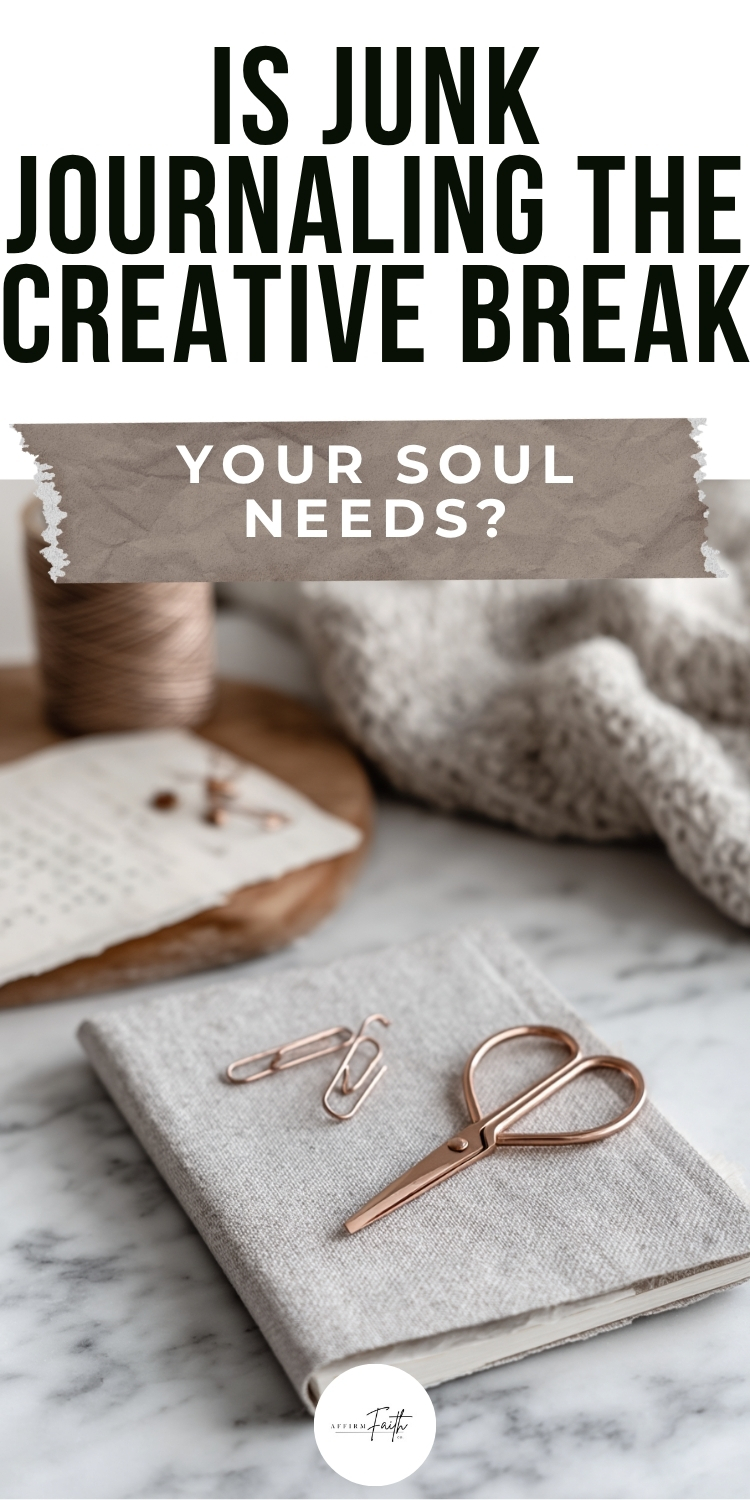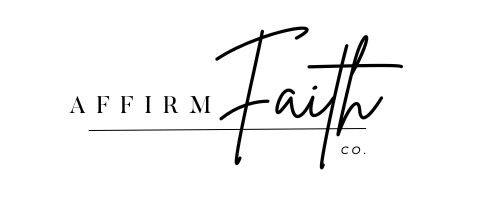What Is Junk Journaling? How to Connect with God Through Art, Paper, and Praise
Please note that this article may contain affiliate links. As an Amazon Associate, I earn on qualifying purchases at no additional cost to you. You can read more at the bottom of this page or read my full disclosure on my Affiliate Disclosure Page
In today’s fast-paced, digital-heavy world, many are craving slower, more meaningful ways to connect—with their thoughts, their memories, and their faith. That’s exactly where junk journaling begins to matter. It’s part of a growing movement toward analog creativity—a hands-on, personal form of expression that invites people to unplug, create, and reflect in a deeply intentional way.
But what is junk journaling exactly? It’s an accessible, artistic, deeply personal practice that’s capturing the hearts of crafters, writers, creatives, and faith-filled journalers everywhere. Whether you’re looking for a mindful escape, a memory-keeping project, or a new way to express your faith, this guide will walk you through everything you need to know to start—or take your practice to the next level.
I started junk journaling after walking through cancer treatment and a long season of burnout—physically drained, spiritually quiet, and desperate to reconnect with both my creativity and my faith. What began as scraps and glue slowly became a sacred space. It was where worship met watercolor, where healing took root in torn pages, and where God’s whispers gently filled the silence again.

What Is Junk Journaling?
At its core, junk journaling is a form of creative journaling that uses recycled or found materials—think old book pages, fabric scraps, receipts, paper bags, photos, and ephemera—to create a journal that’s as expressive as it is functional.
Unlike traditional scrapbooking or bullet journaling, junk journaling is gloriously unstructured. It invites you to play, layer, reflect, and create in whatever way feels most authentic to you.
Historical Roots: From Scrapbooks to Artful Journals
Junk journaling finds its roots in traditional scrapbooking and art journaling. While scrapbooking leaned more toward preserving photos and events in organized layouts, junk journaling embraces a looser, more mixed-media approach. It’s a creative cousin to both, inspired by memory keeping, storytelling, and the joy of using what’s already around you.
Junk Journal vs Scrapbook vs Art Journal
| Feature | Junk Journal | Scrapbook | Art Journal |
|---|---|---|---|
| Materials | Recycled, vintage, or found items | Themed papers, photos, embellishments | Paints, pens, stencils, mixed media |
| Purpose | Self-expression, faith, memory keeping | Event documentation, family history | Creative exploration, emotional release |
| Structure | Freeform, often layered | Structured layouts and themes | Unstructured, abstract or thematic |
| Aesthetic | Eclectic, vintage, personal | Clean, often coordinated | Artsy, experimental |
Why Is It Called a “Junk” Journal?
The word “junk” might sound dismissive, but it’s actually a celebration of everyday beauty. The name comes from using bits and pieces you might otherwise throw away—ticket stubs, receipts, torn paper, even tea bags. Junk journals transform these simple scraps into personal treasure troves of creativity. It’s less about trash and more about finding purpose and beauty in the overlooked.
Benefits of Junk Journaling
Mental Health & Mindfulness
Creating by hand is deeply soothing. The tactile experience of cutting, gluing, and layering engages the senses, calms the nervous system, and draws you into the present moment.
Boosts Creativity
With no rules to follow, junk journaling awakens your creative instincts. You’ll discover new color combinations, textures, and techniques without fear of “getting it wrong.”
Memory Keeping
Junk journals become time capsules filled with everyday moments—your handwritten notes, pressed flowers, meaningful Scripture, or that candy wrapper from a special date.
Sustainable Crafting
Instead of purchasing new supplies, junk journaling encourages reusing what you already have, making it a more eco-friendly creative outlet.
Emotional Expression
Every page is an opportunity to process emotions, tell your story, and express your heart without needing to explain it to anyone else.
Junk Journaling vs Other Types of Journals
While bullet journals and gratitude journals have their strengths, junk journaling offers a unique fusion of writing, art, and soul work:
- Bullet Journals: Focus on productivity and organization.
- Gratitude Journals: Help cultivate thankfulness with brief daily entries.
- Travel Journals: Document vacations or road trips, often with photos.
- Memory Books: Preserve special events like weddings or anniversaries.
Junk journaling can do all of the above—but with more personality, flair, and freedom.
Common Styles in Junk Journaling
- Vintage: Antique pages, muted colors, old stamps and ledgers.
- Nature-Inspired: Leaves, pressed flowers, birds, and earthy tones.
- Whimsical: Fairy tale themes, magical creatures, soft pastels.
- Grungy & Layered: Distressed papers, textured elements, moody palettes.
- Minimalist: Clean design with focus on neutral colors and simplicity.
Popular Uses for Junk Journals
- Creative Writing & Reflection
- Vision Boards
- Faith Journaling & Bible Study
- Weddings, Baby Books, or Travel Keepsakes
- Gifts with Heart (especially treasured handmade gifts)
What You Need to Start Junk Journaling
Essentials
- Scissors or craft knife
- Glue stick or double-sided tape
- A base journal (composition notebook, binder, handmade folio, traveler’s style midori notebook, old book)
Nice-to-Have Add-ons
- Stamps
- Washi tape
- Distress inks
- Lace, ribbons, buttons
- Free printable ephemera: See below to download yours today!
NOTE: The linked items are all things that I personally use in my own junk journals. I’ve also linked to several of the book types that I show in the video.
Where to Source Materials
- Thrift stores and flea markets
- Your own recycling bin
- Church bulletins or devotionals
- Digital kits
- Junk mail
How to Make a Junk Journal
1. Choose a Purpose or Theme
Will this be a faith journal? A place for daily writing? A memory book? Start with that intention.
2. Gather Your Supplies
Collect your base journal, scissors, glue, and a stack of fun papers, fabrics, and items to upcycle.
3. Select a Binding Method
- Stapled or sewn folios
- Pamphlet stitch (great beginner method)
- Binder rings for removable pages
- Altered books or Midori-style journals
- Assemble Signatures: Group your pages into sections (signatures) and fold them in half. A typical journal might have 3-5 signatures.*if not using a pre-bound book or journal
- Bind the Journal: Use your chosen binding method to secure the signatures together. Sewing is durable, but stapling or using rings works too. *if not using a pre-bound book or journal
4. Gather various papers
Lined, blank, patterned—and cut them to your desired size. Mix textures and colors for visual interest.
4. Decorate the Cover
Personalize the cover with fabric, paper, or paint. Add a title or Scripture that sets the tone for your journal. (Sometimes I do the cover at the beginning, other times, I leave it for another time or when the journal is mostly completed.)
5. Build Pages with Layers
Lay everything out before gluing. Use a mix of textures: doilies, music sheets, dried leaves, or even thread.
- Create Junk Journal Pages: Start filling your journal with content. Include:
- Scripture Pages: Write out verses and decorate them.
- Prayer Logs: Record prayers and updates.
- Gratitude Lists: Note daily blessings.
- Faith Quotes: Include inspiring quotes from Christian authors or leaders.
- Sermon Notes: Summarize key points from sermons.
- Personal Reflections: Write about your spiritual experiences and growth.
5. Journal Freely
Add your thoughts, verses, or quotes. Use journaling prompts like:
- “God is teaching me…”
- “Today I saw beauty in…”
- “What I’m praying for right now…”
Junk Journal Ideas for Faith Journaling
- Themed Pages: Create sections based on themes like “Grace,” “Hope,” or “Forgiveness.”
- Monthly Devotionals: Dedicate a page to each month’s devotional focus.
- Prayer Requests: Keep a running list of people and situations you’re praying for.
- Answered Prayers: Document how and when prayers are answered.
- Scripture Memorization: Design pages to help memorize verses.
Tips for Bible Junk Journaling
- Use Color Coding: Assign colors to different themes or emotions.
- Incorporate Art: Draw, paint, or use stamps to illustrate verses.
- Layer Materials: Add depth with layers of paper, fabric, and embellishments.
- Include Pockets: Create pockets to hold notes, photos, or small keepsakes.
- Be Authentic: Let your journal reflect your true self; it’s a personal journey.
Bible Junk Journaling: Growing in the Word Creatively
Want to go deeper with Scripture? Bible junk journaling gives you space to meditate on a passage and respond with creativity.
Try These Page Ideas
- Illustrated verse studies
- Layered gratitude prayers
- Pages inspired by sermons or devotionals
- Creative affirmations with verses like:
- “I can do all things through Him who strengthens me.” (Philippians 4:13 NASB)
Pair these pages with visual elements—flowers, lace, hand-lettered Scripture—and let it be your sacred quiet time.
“Just as God makes beauty from ashes (Isaiah 61:3), junk journaling is our way of turning fragments into something whole.”
Junk Journaling for Self-Care & Mental Health
- Anxiety Relief: Use pages to write what you’re worried about, then paint or decorate over them to release it.
- Gratitude Lists: Incorporate into your weekly routine.
- Self-Compassion Notes: Write encouraging truths over soft, peaceful backgrounds.
Junk journaling becomes a therapy of sorts—one where you talk to God, express yourself, and breathe deeply.
Expert Tips from Junk Journal Creators
Learn from creatives who’ve been at this for years:
- Organize scraps by color or theme for quick access.
- Don’t hoard your favorite items—use them!
- Keep a “scrap bin” handy for spontaneous creativity.
Common Mistakes to Avoid
- Overbuying: Start with what you have.
- Waiting for perfection: Just begin. Let your journal be messy and honest.
- Not laying out before gluing: Dry-fit everything first!
- Thinking there’s a right way: There isn’t. Your journal, your rules.
My Final Thoughts: Why You Should Start Junk Journaling in 2025
Whether you’re craving creativity, seeking emotional healing, or longing for a fresh way to connect with your faith, junk journaling offers it all. It’s personal. It’s therapeutic. It’s beautifully imperfect.
Junk journaling reminds us that scraps can become art, and broken pieces can form something meaningful, just like our lives in the hands of a loving Creator.
So go ahead. Start small. Use what you have. Give yourself permission to play, to worship, to reflect, and to create something that’s truly yours.
Comment below and tell us if you have tried junk journaling and share this post with a friend who’s looking for a fresh way to connect with Scripture!
FAQs About Junk Journaling
-
What is junk journaling?
Junk journaling is a creative journaling practice that uses recycled, found, or vintage materials to create expressive, often layered pages. It combines elements of art journaling, memory keeping, and scrapbooking to help you reflect, write, and create freely.
-
Can I write in a junk journal?
Yes, absolutely. Many people use junk journals for reflective writing, prayer journaling, memory keeping, or documenting everyday thoughts. Your handwriting becomes part of the journal’s charm.
-
What do I need to start junk journaling?
You only need a few basic supplies to begin, such as scissors, glue, and a notebook or old book. You can also use recycled papers, fabric scraps, ephemera, and other found materials. Optional tools like washi tape, stamps, and ink can enhance your pages.
-
Is junk journaling expensive?
It doesn’t have to be. Junk journaling is one of the most budget-friendly creative hobbies because it encourages using what you already have. You can repurpose household paper, packaging, or thrifted books. Many free printables are also available online.
-
What kind of journal should I use?
You can use a blank notebook, sketchbook, altered book, or handmade folio. Choose something that feels comfortable to work with and suits your creative goals. Some prefer ring-bound journals for flexibility, while others enjoy stitched or sewn books.
-
How is junk journaling different from scrapbooking?
Scrapbooking is typically more structured and focused on preserving photos with themed embellishments. Junk journaling is more freeform and personal, often combining writing, art, and mixed media using everyday or vintage materials.
-
Can I use junk journaling for Bible study or prayer?
Yes. Many people use junk journaling as a creative way to study Scripture, write out prayers, and reflect on their faith. It can be a powerful tool for worship, meditation, and personal spiritual growth.
-
Where can I find materials for junk journaling?
Look around your home for items like envelopes, packaging, receipts, and old books. Thrift stores, flea markets, and online printable kits are great sources. You can also find community groups for swapping or sharing materials.
Bonus Resources
Printable Ephemera
- Faith-based journaling cards – Etsy
- Beautiful Blessings Ephemera Kit
- Whatsoever Things Journal Printable
- Grace N’ Roses Digital Journal Kit
Journaling Communities
- Facebook: Junk Journal Junkies, Faith Art Journaling
- Reddit: r/JunkJournaling
- Instagram: Explore hashtags like #junkjournal #faithjunkjournal
Recommended YouTube Channels & Books
- Treasure Books (YouTube): Amazing tutorials on binding and layering.
- The Reset Girl (YouTube): Inspirational faith-based journaling and prompts.
- Johanna Clough (YouTube): Known for her easy tutorials and junk journal flips.
- Book to Read: Creative Journaling: A Guide to Over 100 Techniques and Ideas for Amazing Dot Grid, Junk, Mixed-Media, and Travel Pages: Author Renee Day of the popular Instagram @thediyday takes you on an artistic adventure, guiding you with step-by-step photos and instruction, as you learn how to incorporate amazing DIY ideas

Sue Nelson is a Christian author, Bible teacher, and conference speaker with a heart for helping women grow deeper in their walk with God. She has written several books on Christian marriage, Proverbs 31 living, verse mapping, and the Twelve Tribes of Israel. Her Bible studies and devotional tools are used by women’s ministries across the United States.
With years of experience teaching Scripture and leading small groups, Sue has spoken at numerous women’s conferences and retreats nationwide. She actively serves in multiple ministries at her home church—including Hospitality, Welcome PSG Corp, and Leaders of the Pack—and is known for her willingness to serve wherever there’s a need.
A wife, mom, grandmother, and proud dog/cat mom, Sue lives a life centered on Christ. She supports a wide range of Christian causes, including Bible distribution, scholarships for faith-based retreats, homeless outreach, food pantries, and clothing ministries.
You can connect with her through her women’s Bible study community, She Opens Her Bible
NASB – “Scripture quotations taken from the NASB. Copyright by The Lockman Foundation“
